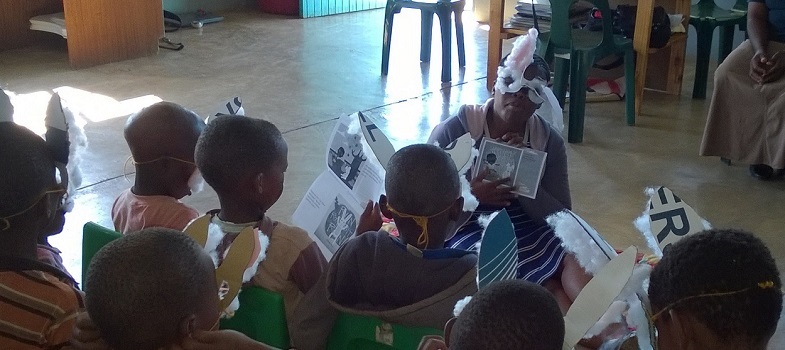Stages of reading development
It is important that as a teacher of early reading, you are aware of how your children are progressing. We have devised a chart that shows the stages of reading development [Tip: hold Ctrl and click a link to open it in a new tab. (Hide tip)] . It summarises what we see as the key steps in developing as a fluent, independent reader. The chart sets out what you might expect a child to be able to do at each stage of their development, from pre-reader to a more independent reader, providing some examples to illustrate what each stage means.
Activity 6.1a: Looking at the stages of reading development
Download the chart ‘Stages of reading development’ and carefully read each section. Discuss the chart with a colleague, and consider the following questions:
- Do the six steps form a logical progression that you recognise? Could a similar chart be created for your ‘home‘ language?
- Think of a beginner reader in your class. How do you know they are at this early stage of early reading development?
- Think about children you have taught, or are currently teaching, and identify one at each of these stages of reading development. Think about what you could do for each child to help them move on.
- Read Case Study 6.1 below. Discuss the case study with a colleague and jointly plan how you might do something similar in your class.
Case Study 6.1: Reading development in Anne’s class
Anne teaches a Grade 2 class in Nanyuki, Kenya. She has recently attended a course on early reading and has returned to school with the chart showing stages of reading development. Anne decides to practise using the chart by choosing three children who she knows are reading at different levels. She chooses I Like to Read, an eight-page storybook from Level 1 on the ASb website that has short sentences, phonically regular words and common words. She downloads the book onto her phone.
At lunchtime, Anne sits down with each child in turn and asks them to share a few pages of the book with her. She has a tick chart ready so that she can record what she learns about each child. If the child is struggling, Anne helps them.
- Hellen can read the first page well. She stumbles over ‘who’, but can work out ‘can I read to’. She uses her knowledge of letters and sounds to read ‘asleep’. She reads ‘who’ correctly the second time. She struggles with the word ‘busy’, but reads it correctly the second time. She breaks ‘grandmother’ and ‘grandfather’ into syllables.
- Florence talks about the boy sitting on a nice chair, reading a book. Anne reads ‘Who can I read to?’ with her. Florence says the baby is asleep and mama is cooking. She is looking at the pictures and not trying to read the words.
- Moses uses his finger to point to words. He takes his time and tries to read each word one after the other. He knows that the storybook’s title is I Like to Read and can use that information to work out what it says on page 1. He struggles with ‘who’ but slowly works out ‘can I read to’. He needs help with page 3 as he wants to read ‘baby’ but doesn’t see a ‘b’, but he can read ‘my’ and ‘ is’.
After each child leaves, Anne uses the stages of reading development chart to decide the reading stage of each child. Anne feels more confident using the chart and decides to repeat the process with more children.
Activity 6.1b: Identifying stages of reading development (if possible, do this activity with a partner)
Something to think about: Is the chart showing stages of reading development helpful to your thinking about children as readers? Why, or why not? Are there things you would add or take away from it and if so, why?
Introduction



